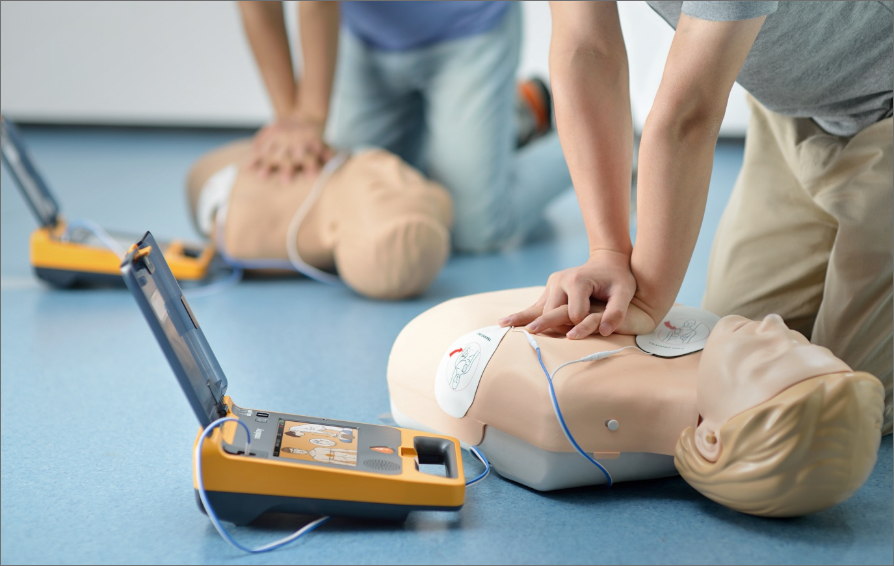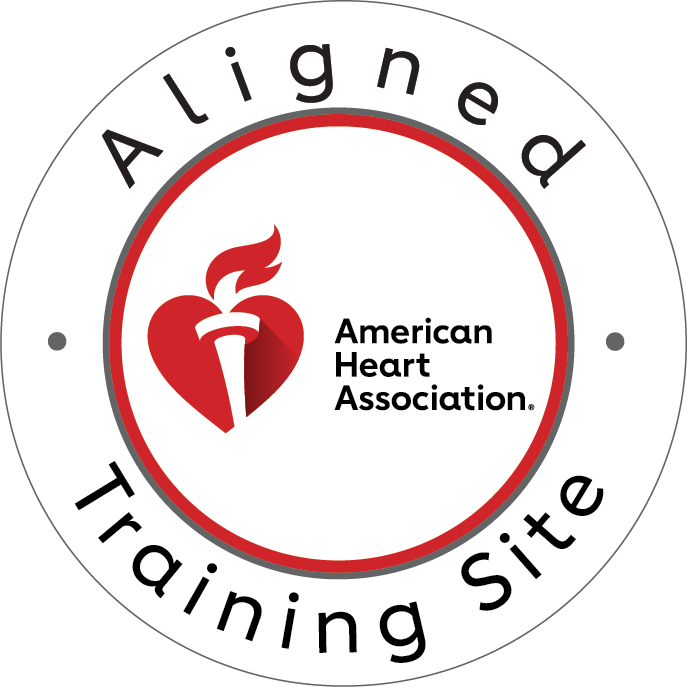When someone experiences sudden cardiac arrest, every second counts. Research consistently shows that immediate bystander CPR can mean the difference between life and death. How bystander CPR doubles survival rates in cardiac arrest situations has become one of the most compelling arguments for widespread CPR training in communities across America.
Understanding Cardiac Arrest and Its Critical Timeline
Cardiac arrest strikes without warning, causing the heart to suddenly stop beating effectively. Unlike a heart attack, which involves blocked blood flow to the heart muscle, cardiac arrest means the heart’s electrical system malfunctions completely. This creates an emergency where brain damage begins within four to six minutes without oxygen.
The survival chain in cardiac arrest depends heavily on immediate action. When bystanders recognize the signs and begin CPR immediately, they become the crucial first link in emergency response. Studies demonstrate that how bystander CPR doubles survival rates stems from this immediate intervention during the critical first minutes.
During cardiac arrest, the brain and vital organs quickly begin to shut down without oxygenated blood circulation. However, chest compressions can maintain blood flow at approximately 25-30% of normal cardiac output. While this may seem insufficient, it provides enough circulation to keep vital organs viable until advanced medical care arrives.
The Science Behind How Bystander CPR Doubles Survival Rates
Multiple large-scale studies have documented the dramatic impact of immediate bystander intervention. The American Heart Association reports that effective bystander CPR can double or triple survival rates from cardiac arrest. This improvement occurs because chest compressions maintain critical blood flow to the brain and heart during the crucial minutes before emergency medical services arrive.
Research from Seattle’s emergency medical system, one of the most studied in the world, shows survival rates climbing from 5% to over 10% when bystander CPR is performed immediately. In some communities with high rates of CPR training, survival rates reach 15-20% for witnessed cardiac arrests where bystanders begin CPR promptly.
The mechanism behind how bystander CPR doubles survival rates involves maintaining perfusion pressure in vital organs. Chest compressions create artificial circulation that prevents complete cellular death. This preservation of tissue viability allows advanced life support interventions to be more effective when paramedics arrive.
Furthermore, early CPR helps maintain the heart’s ability to respond to defibrillation. The longer cardiac arrest continues without intervention, the less likely electrical therapy is to successfully restore normal heart rhythm. Bystander CPR keeps the heart muscle viable for these advanced interventions.
Breaking Down Barriers to Bystander Intervention
Despite overwhelming evidence showing how bystander CPR doubles survival rates, many witnesses to cardiac arrest hesitate to act. Common barriers include fear of causing harm, lack of confidence in skills, concerns about legal liability, and uncertainty about recognizing cardiac arrest.
Education campaigns increasingly focus on overcoming these psychological barriers. The “hands-only” CPR approach has simplified the process, removing the intimidation factor of mouth-to-mouth breathing. This streamlined technique involves continuous chest compressions at 100-120 beats per minute, making it accessible to virtually anyone.
Legal protections also exist in all 50 states through Good Samaritan laws, which protect bystanders who provide reasonable emergency care. These laws recognize that attempting CPR, even imperfectly, is far better than no intervention at all.
Training programs now emphasize that perfect technique isn’t required for effectiveness. Research shows that even suboptimal CPR provides a significant benefit compared to no intervention. This message helps potential rescuers understand that their efforts, regardless of skill level, can save lives.
Community Impact of Widespread CPR Training
Communities with high rates of CPR training consistently demonstrate better cardiac arrest survival rates. Seattle, Washington, and Rochester, Minnesota, serve as prime examples of how comprehensive community training programs translate into saved lives.
These successful programs share common elements: regular training in schools, workplaces, and community centers; public awareness campaigns; and integration with emergency medical services. When significant portions of the population know CPR, the likelihood of trained bystanders being present during cardiac emergencies increases dramatically.
The ripple effect of community training extends beyond individual skills. Trained individuals often become advocates, encouraging family members and friends to learn CPR. This creates a multiplier effect where single training sessions influence multiple people to seek certification.
Schools have become particularly important training venues, as students can learn skills they’ll retain throughout their lives. Many states now require CPR training for high school graduation, recognizing that today’s students are tomorrow’s potential life-savers.
Technology and Modern CPR Training
Advances in training technology have made learning CPR more effective and accessible than ever before. High-quality manikins provide realistic feedback on compression depth and rate, allowing learners to develop proper technique. Video-based learning modules supplement hands-on practice with visual demonstrations of proper technique.
Mobile applications now provide CPR guidance during actual emergencies, walking untrained bystanders through the process step-by-step. These tools bridge the gap between formal training and real-world application, potentially expanding the pool of people willing to attempt CPR.
Automated External Defibrillators (AEDs) have also become more prevalent in public spaces. These devices provide voice prompts and are designed for use by untrained individuals. The combination of bystander CPR and early defibrillation creates an even more powerful intervention that significantly improves survival odds.
Training programs increasingly integrate AED use with CPR instruction, teaching people to use both interventions effectively. This comprehensive approach maximizes the potential for successful resuscitation in community settings.
Recognizing Cardiac Arrest and Taking Action
Rapid recognition of cardiac arrest is crucial for prompt intervention. The primary signs include sudden collapse, unresponsiveness, and abnormal or absent breathing. Gasping or agonal breathing often occurs in early cardiac arrest and should not be mistaken for normal breathing.
The priority is always calling 911 to activate emergency medical services. However, this call should be brief, immediately followed by beginning chest compressions. In ideal situations, one person calls 911 while another begins CPR, but single rescuers should call first, then begin compressions.
Proper hand placement involves positioning the heel of one hand on the center of the chest between the nipples, with the second hand on top and fingers interlaced. Compressions should be hard and fast, pushing at least two inches deep at a rate of 100-120 compressions per minute.
Minimizing interruptions is critical for maintaining blood flow. Chest compressions should continue until emergency medical services arrive and take over care. Even brief pauses significantly reduce the effectiveness of CPR.
The Future of Bystander CPR and Cardiac Arrest Survival
Emerging research continues to refine our understanding of optimal bystander CPR techniques. Studies examining compression depth, rate, and timing provide insights that inform training protocols and improve outcomes.
Dispatcher-assisted CPR programs are expanding, providing real-time guidance to emergency callers. These programs help untrained bystanders perform effective CPR by providing step-by-step instructions over the phone during the emergency.
Community response systems are evolving to include volunteer responder networks, where trained individuals receive alerts about nearby cardiac arrests through smartphone applications. These systems can further reduce response times and increase the likelihood of immediate bystander intervention.
Research into public access defibrillation continues to show promise, with studies examining optimal placement strategies and community training approaches. The goal is to create comprehensive community response systems where effective help is always nearby.
Take Action: Learn CPR and Save Lives
Understanding how bystander CPR doubles survival rates in cardiac arrest should inspire everyone to learn these life-saving skills. The evidence is clear: your intervention can make the difference between life and death for someone experiencing cardiac arrest.
Don’t wait for an emergency to wish you had learned CPR. Take action today by enrolling in a certification course. CPR St. Louis is an American Heart Association training site that offers comprehensive, hands-on training in a stress-free environment. Whether you need initial CPR certification in St. Louis or BLS certification in St. Louis, their expert instructors provide the skills and confidence you need to respond effectively in emergencies.
CPR St. Louis offers initial certifications and renewals in BLS for Healthcare Providers, ACLS, PALS, and CPR and First Aid courses. All classes emphasize practical, hands-on learning that prepares you for real-world situations. As the best CPR training provider in St. Louis, they ensure you receive high-quality instruction that meets American Heart Association standards.
Your decision to learn CPR today could save a life tomorrow. Contact CPR St. Louis now to schedule your certification and join the ranks of trained bystanders who are ready to act when seconds count. Remember, how bystander CPR doubles survival rates isn’t just a statistic—it represents real people whose lives depend on trained individuals like you being ready to help.





